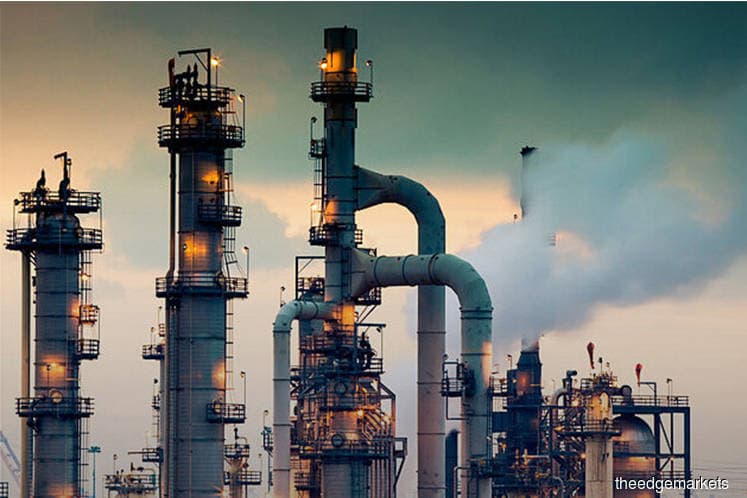
This article first appeared in The Edge Malaysia Weekly on December 9, 2019 - December 15, 2019
THE 20% royalty or higher revenue share has for some time been the point of contention between the federal government and the oil-producing states, notably Sabah and Sarawak — which they claim they are entitled to under the Malaysia Agreement 1963 — and, to a lesser extent, Terengganu and Kelantan (which has yet to be recognised by the federal government as an oil and gas-producing state).
The federal government is of the view that the right revenue-sharing formula is clearly stated in the Petroleum Development Act (PDA), which was passed by parliament in 1974, and prior to that, it got the agreement of all states, including Sabah and Sarawak.
Matters get complicated when the 20% royalty was mentioned in Pakatan Harapan’s general election manifesto, and now that it is the federal government, PH, according to Sabah, Sarawak and Terengganu, must honour its promise. But the figure 20% itself is a matter of debate — whether it is based on royalty as per the PDA, from profits and not revenue derived from these states, from profits of Petronas Group or just profits from the upstream sector, among others.
The Petronas graphic (right) shows a typical oil and gas revenue distribution of the production sharing contracts (PSC), which Petroliam Nasional Bhd signed with oil companies and has been in use since 1995.
It outlines where the percentage of share from a barrel goes. On top of the barrel is the 10% shared equally by the federal and state governments, followed by the 70% cost recovery — expenses that oil companies can claim from Petronas for exploration, development and production (EDP) works throughout the PSC period of mostly between 20 and 30 years.
Only companies that discover, develop and produce oil from their respective PSC blocks can make this claim. Companies that explore but did not find any hydrocarbon reserves have to bear their own cost — which is an investment risk they take. Over the years, this recovery cost has increased from as low as 25% to a high of more than 70% as EDP activities move to riskier deep-sea fields, some of which are more than 1,500m deep. The first PSC was signed in 1976, when the terms were generously in favour of Petronas.
The graphic also shows how the remaining 20% of the barrel is shared by Petronas and the PSC contractors, and covers the amount paid as petroleum income tax.
Here, we also explain why if the royalty, as per the PDA, goes up to 20% — which is what many quarters, including political parties in Sabah and Sarawak, want — it is not commercially viable. In short, a 20% royalty is a “no go”.
Based on the details in the graphic, there is simply no room for royalties to the states to increase from the current 5% to 20% if the rest of components’ share of the barrel remains the same. If the states do get higher royalties — with the federal government’s share and cost recovery remaining unchanged — then it has to come from Petronas’ portion.
If this happens, it could lead to less revenue and profit for Petronas, which can affect its capital expenditure and ability to look for new investment and income resources and grow the business further. Less profit also means less dividend and corporate tax to the federal government. In the long term, it will affect the federal government’s revenue. So, we should not kill this golden goose.
Furthermore, there is no way foreign oil companies that are signatories to existing PSCs would agree to a lower cost recovery or profit share. Contracts signed are sacred and have to be honoured. In addition, revising the percentage share of oil profit and recovery cost downwards for new PSCs and exploration blocks will only make Malaysia’s upstream sector uncompetitive and no longer attractive to foreign and local investors.
So, what is the alternative, then? Under the current PDA and PSC format, the easiest and fastest way for the states to get higher royalties is for the federal government to give up its 5% share. This allows the states to get a 10% royalty without disrupting the cost recovery and profit sharing formula.
This can be done, provided the federal government has enough revenue and registers a surplus budget. But as we know, the federal government’s annual budget has been in deficit since 1998. In recent years, the problem has become more acute as revenue is just enough to cover its operating expenditure and all development projects are paid through borrowings. As long as this continues, the federal government is in no position to give up the 5% royalty.
There have been suggestions, including from Sabah Chief Minister Datuk Seri Mohd Shafie Apdal, that the oil and gas-producing states be given a stake in the national oil corporation so that they can earn dividends.
The other way is to give shares at the Petronas subsidiaries level, but this has already been done in the past. For example, the Sarawak government is a shareholder in the Bintulu LNG project. But in the oil and gas business, even a small stake in a subsidiary is very costly for the states and the return is not immediate as such investments have a long gestation period.
Perhaps the best way out for Sabah and Sarawak would be to find a more holistic solution within the framework of the Malaysia Agreement with the federal government.
Save by subscribing to us for your print and/or digital copy.
P/S: The Edge is also available on Apple's AppStore and Androids' Google Play.